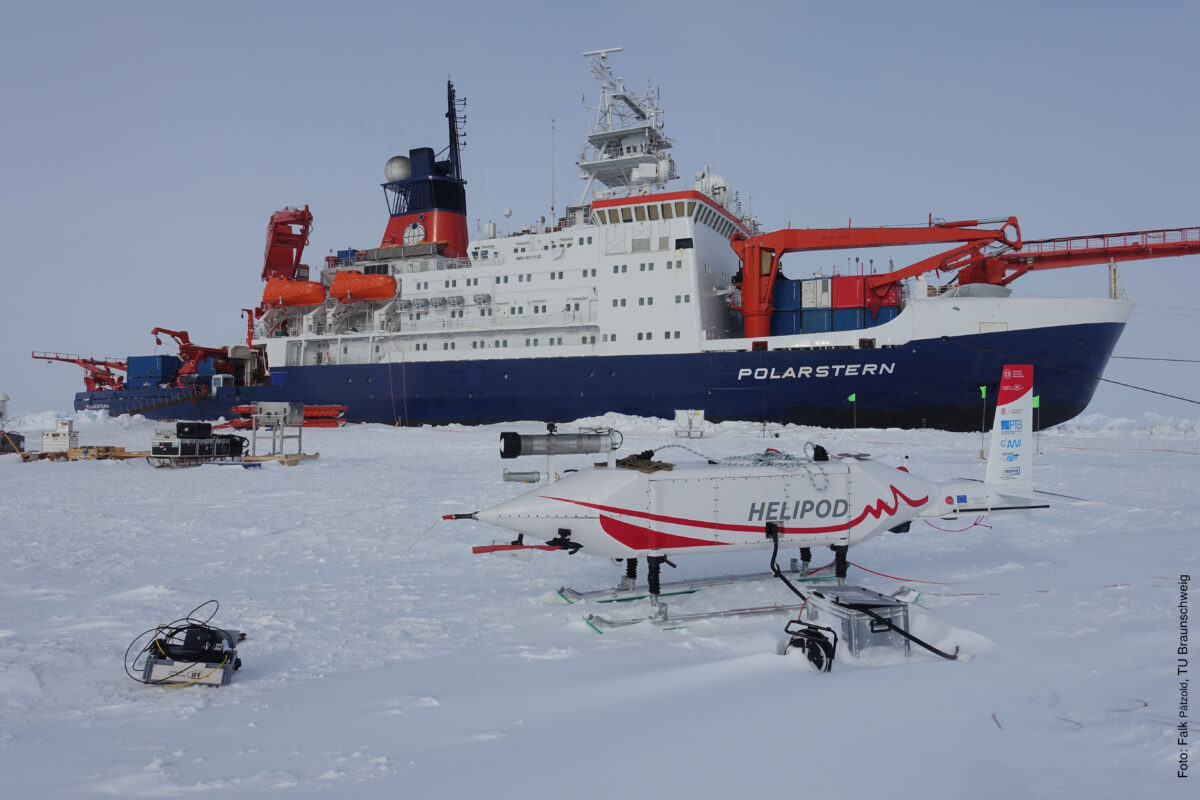Research at the work group „Airborne Meteorology and Measurement Techniques“ at the Institute of Flight Guidance of TU Braunschweig
In the global changes of climate, the Arctic warms at a much higher speed and magnitude. This is caused by the particular feedback mechanisms, which play a large role there. For example, increasing temperatures result in stronger melting of sea ice. This reduces the highly reflective ice surfaces, and more solar radiation is absorbed by the open water, leading to further warming. These processes are very complex, as many more factors are involved, like clouds, aerosol, biological activity, and changes in the ocean.
The workgroup „Airborne Meteorology and Measurement Techniques“ measures many parameters simultaneously with the helicopter borne sonde HELiPOD to investigate the relationships between different processes. With HELiPOD, the surrounding environment of a research vessel in the Arctic Ocean can be investigated up to a radius of 100km. This makes it possible to investigate how much the measurements in the vicinity differ from the measurements on the ship.
In this way, distinctive features of the measurement data can be analyzed in the light of other parameters. An example of this is enhanced temperatures or a high concentration of particles linked to changes of the sea ice surface. Like this, HELiPOD acts as a link to investigate the relationships between the different Earth System Compartments, which are the atmosphere, sea ice, ocean, biogeochemistry, and biosphere.
Research questions
- What is the relationship between atmospheric observations, sea ice, trace gases, radiation and aerosol in the Arctic?
- How is the spatial distribution of parameters, how variable are observations on scales up to 100km?
- How representative are measurements at a fixed site for the conditions in the closer surroundings?
Methods
- Airborne measurements with the helicopter borne sonde HELiPOD
- Simultaneous measurements of many different parameters (arond 60 sensors on HELiPOD)
- Analysis of atmospheric data and their relation with sea ice, trace gases, aerosol and radiation
Responsible person
Associate professor Dr. Astrid Lampert, Institute of Flight Guidance, TU Braunschweig
Projects we participate in
MOSAiC – Multidisciplinary drifting Observatory for the Study of Arctic Climate
Measurements with the helicopter borne sonde HELiPOD from the research vessel Polarstern
Art of Melt
Measurements with the helicopter borne sonde HELiPOD from the Swedish ice breaker Oden, with the aim to investigate the impact of warm air intrusions in the Arctic.
